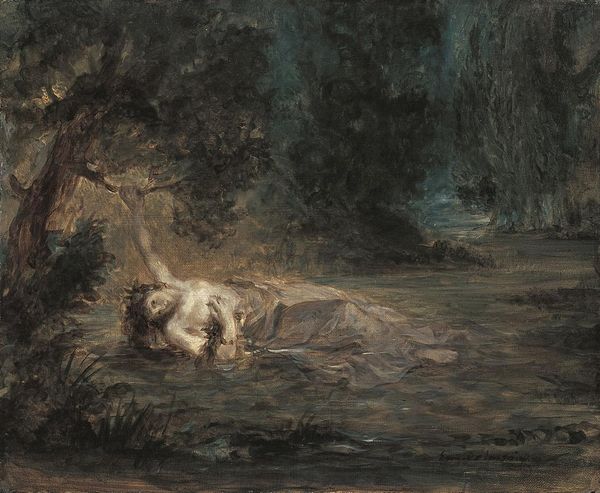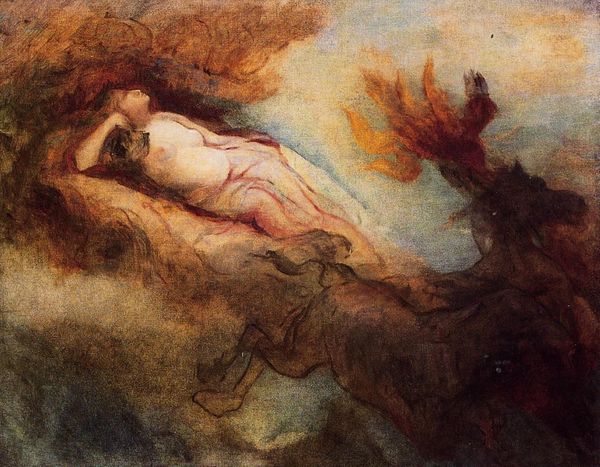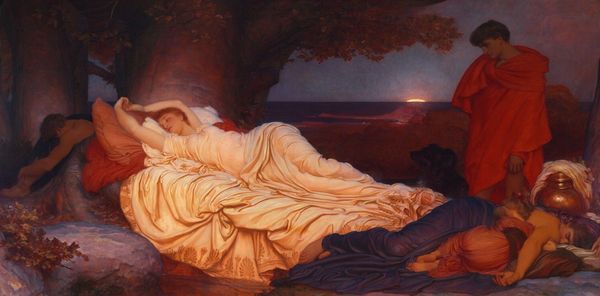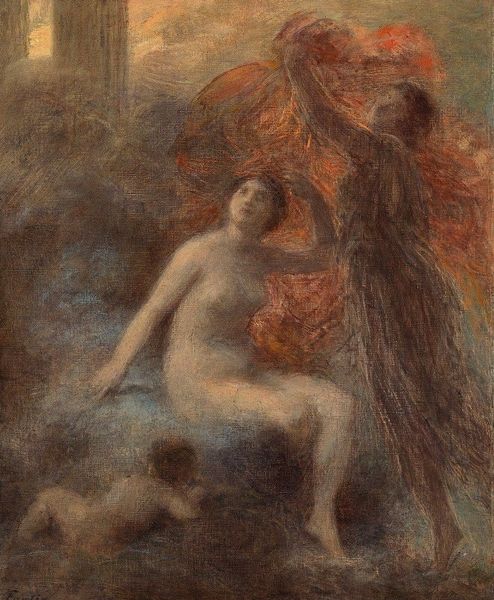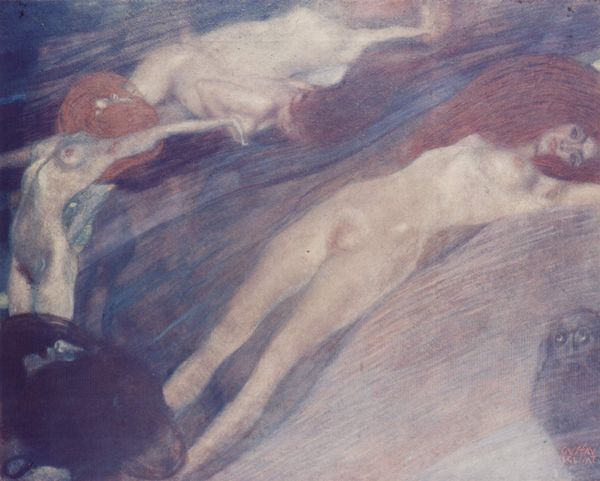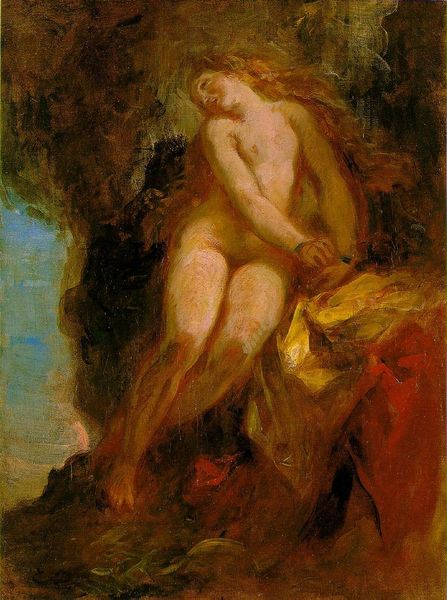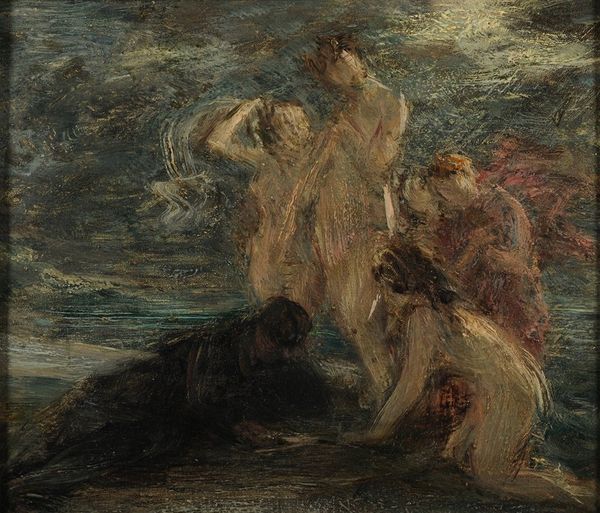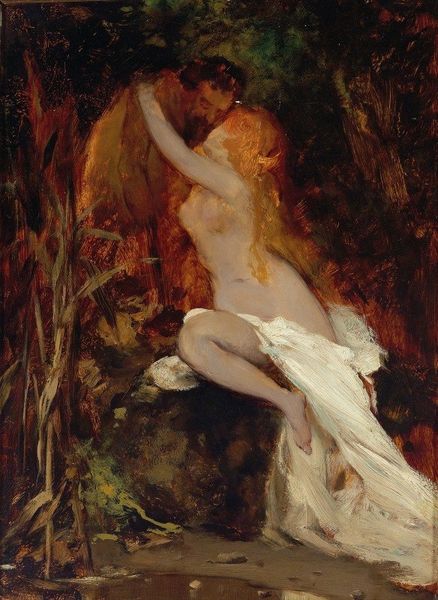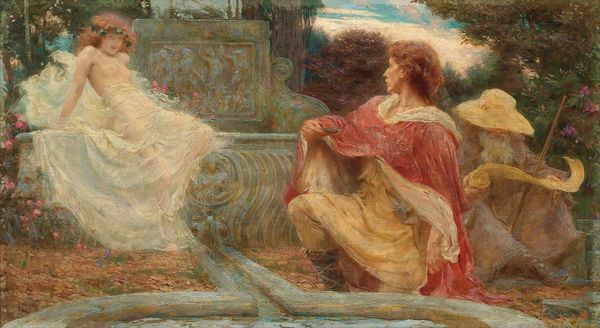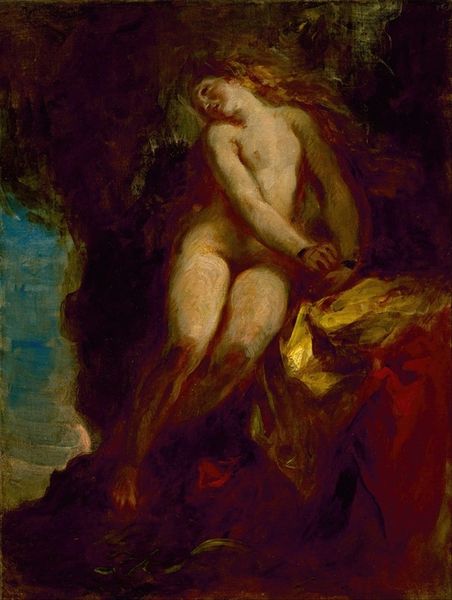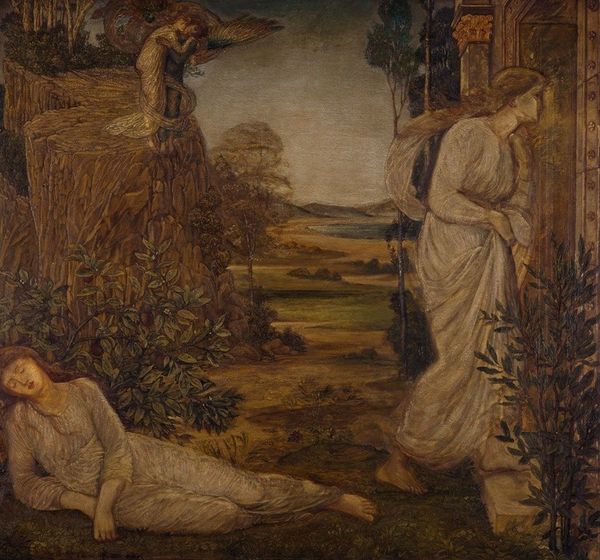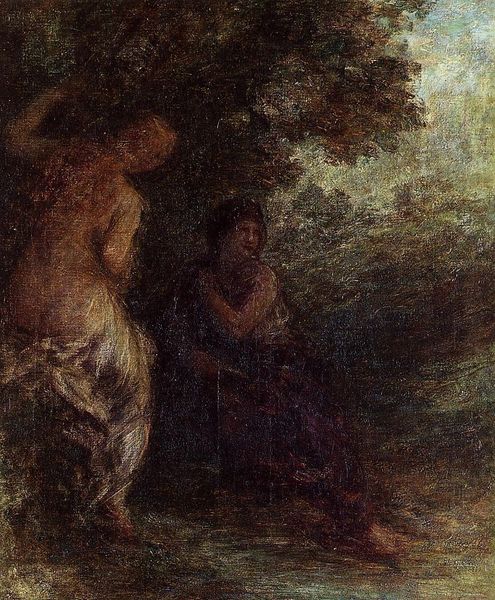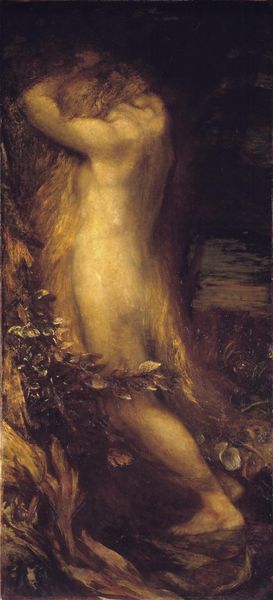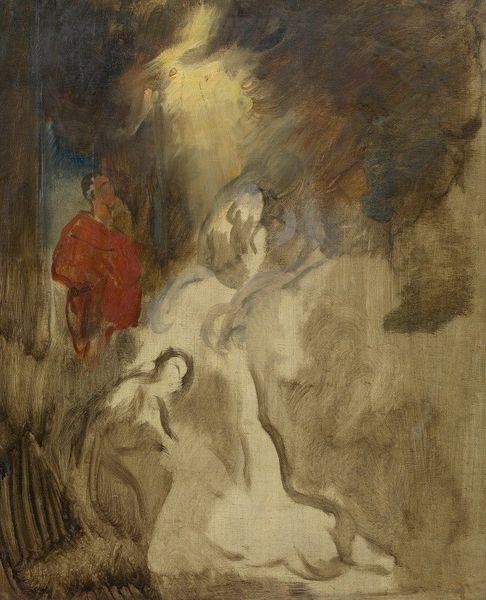
Copyright: Public Domain: Artvee
Frederic Leighton created this oil sketch, titled 'Colour study for ‘Cymon and Iphigenia’', sometime in the late 19th century. Here, the eye is immediately drawn to the contrast between the warm hues of the figures and the cooler tones of the landscape. The composition is structured around a diagonal axis, from the top left corner down to the lower right, creating a sense of depth. Leighton’s technique here reveals an interest in colour as a primary expressive tool. The brushstrokes are loose and visible. This prefigures the dissolution of form that would come to dominate early 20th century painting. It also invites us to consider how the materiality of paint itself contributes to the work’s meaning. Ultimately, Leighton’s study prompts us to reflect on the unstable relationship between colour, form, and representation. The visible brushstrokes and emphasis on colour unsettle any fixed interpretation, instead inviting ongoing re-evaluation.
Comments
No comments
Be the first to comment and join the conversation on the ultimate creative platform.
